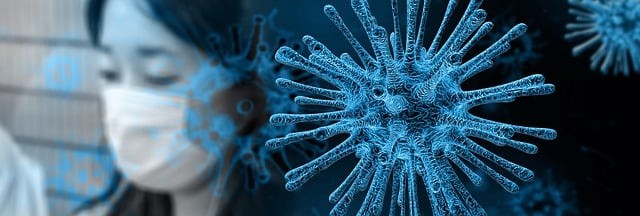
How the SARS-CoV-2 mutations and the evolutionary pace from every variant to the current ones. Evolving pathogens have found a way to develop into the Delta and Omicron, which are their characteristics. Variants are also marked by waves that have a beginning and an end, fuel changes in the pathogen.
Coronavirus Evolves Fast
The evolutionary phases from the first to the last follow a timeline and do not happen randomly. All viruses change in time, but the coronavirus has managed to be successful at spawning variants that have developed structures to infect cells, reported Sciencealert.
Whatever is discovered how the virus can change is only a possibility of its possible trajectory in evolution. It is recognized as one of the most successful and lethal pathogens to arise in the last two years.
Novelty is not the case as it develops variants at a regular pace which seems effortless.
Sebastian Duchene, an infectious disease researcher from the Peter Doherty Institute for Infection and Immunity in Australia, said that SARS-CoV-2 variants, especially ones of concern, have undergone far more modifications than predicted from similar viral pathogens developing at a comparable level.
He added that most viruses would have mutations occurring at an average pace with an interval that takes longer for the next change. The coronavirus has exceeded evolution in faster intervals, and they change randomly.
For example, the Delta-type SARS-CoV-2 mutations took everyone by surprise by taking six weeks from their initial form, said Duchene depending on the evolutionary pace.
Read Also : Study Identifies Certain Antibodies That can Stop Omicron Infection, Affect the Notorious Spike Proteins
According to Oxford University Press, the new investigation sought to know why the virus accelerated its evolution faster than expected.
Variants of Concern
Analysis of the viral genome and its sequence was studied to see how the rise of Variant of Concern (VOCs) that were more virulent than the first ones came about.
One of the suspicions is how a viral was affected by the substitution rate, which concerns the random mutations; the pathogenic genes seem to have accelerated change.
Another is the Gamma type, which was not as quick to evolve, took 17 weeks, and the Alpha is 14 weeks before it changed.
All exhibited different alteration rates and evolution that are not entirely understood what governs these pathogens' mechanisms.
Like what happens to animals, as suggested by Charles Darwin, natural selection would also apply to viruses. For viruses, it would mimic what multi-celled animals go through.
Other factors could be how the virus would spread from vaccinated or unvaccinated individuals, and this adds another rumple to viral evolution, which is random. But researchers are still stumped by the pathogen hounding populations after two years, and it is still obscure what is the trigger of change for the infection.
All the data about genomic tracking and other stuff has not revealed anything yet. The reasons for evolution is tied down by researcher who can figure out counter-measures to stop it from spreading and find a cure.
If genomic surveillance proves successful, that would predict variant Omicron would stop and lessen infection of populations. SARS-CoV-2 mutations and pinning a distinct evolutionary pace would make a difference in this pandemic and others to get back to normal, nor new normal.
Related Article : Scientists Engineer Synthetic Coronavirus To Study SARS-CoV-2 Innate Mechanisms Better To Devise Countermeasures








